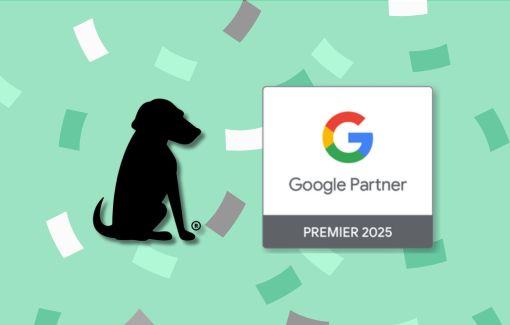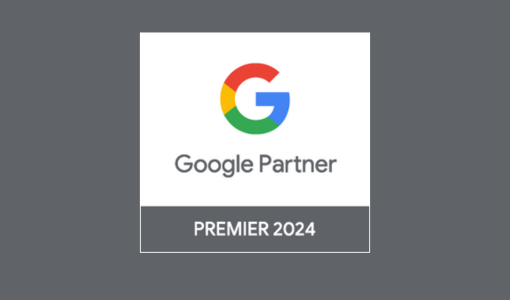
Image created using generative AI
To keep your content rocking, you need to play the right algorithm
During social media’s infancy, marketers would create an account for their brand, put forth time and energy into building an engaged and loyal following, and then post content. A photo, a video, an article, you name it—they’d post it and almost all of their followers would see it. Pretty simple. Unfortunately, that’s not quite how it works these days.
Today, content distribution is determined by social media algorithms; and it seems like every few weeks we hear about changes in these algorithms. These constant changes can be daunting for marketers in charge of a brand’s social media strategy. However, by understanding how social media algorithms work and evolve, brands can learn to leverage them to maximize their organic social media content.
What’s a social media algorithm anyway?
When you open up Facebook or Instagram, algorithms are used to determine which posts you see. Using artificial intelligence, these problem-solving computer programs analyze your social interactions (or data points) such as page visits, comments, likes, and post views to calculate what content to display in your social feeds. These algorithms continuously learn, updating as user behavior and interests change. For example, if a user spends a good deal of time viewing camping and outdoor content, the algorithm learns that this is something the user is interested in and distributes more outdoor-focused content to that user.
While Facebook and Instagram have not revealed the inner technical workings of their algorithms, we’ve learned a lot by analyzing content performance from the over 60 brands that we manage as well as the insights we’ve gained from other social media experts. Over the past several years, these updates reveal a trending shift away from vanity metrics (i.e., likes and views) toward meaningful interactions such as interests and conversations. So, what does this mean for marketers and advertisers? When it comes to organic posts, likes and reactions are proving less important to the algorithms, while various forms of engagement such as comments, shares or even clicking over to read an article are given more weight.
Social media algorithms also play a key role in increasing the necessity of ads and paid content. Platforms like Facebook and Instagram are in the business of making money. How do they do that? By keeping people on their platforms. The longer users stay on social apps and scroll through content, the more ads can be served, resulting in more revenue. Therefore, it makes sense that Facebook and Instagram would favor organic content from those brands that keep their followers engaged and using the platforms as long as possible.
A great marketer always hits their target
Now that we understand the basics of social media algorithms, what can social creators do to win the favor of these computer programs? To start, brands need to create content that will generate interest and spark conversation from their audience. This starts with knowing who your target audience is and understanding their interests, how they use social media, and when they are online. By knowing this, brands know what type of content to create and when to post it. When followers repeatedly comment on, interact with, or view a brand’s content, the social media algorithms learn that this brand’s content is essential to those followers. Listen, learn, and respond.
Crafty captions and the art of social conversation
One of the most popular ways to help boost engagement is to craft your caption text in a way that provokes a response. A call to action prompts conversations, reactions, and/or inspires a desired action, such as clicking a link. Asking questions, seeking opinions, posting polls … all of these not only generate conversation but they provide brands with important insights into their audience. If you’re a resort, for example, there’s a difference between posting a photo of your property and saying “Happy Friday!” vs “It’s a beautiful day here in San Diego. When are you planning your next vacation?” The more you engage with your audience, the more they’ll engage with you.

Be a good listener
Keeping your audience engaged also relies on the type of content you serve them. Every brand must ask themselves, “Why is my audience following me on social media?” According to a study, 73% of customers follow brands for discounts and offers. Other popular motives include the desire to be entertained and learn something new. These are great stats to guide you but conducting your own research is key to understanding your audience. Two easy ways to do this are to analyze content performance and poll your followers. Both Instagram and Facebook have poll features on their platforms that make gathering audience opinions simple.
Everyone loves free stuff
Hosting a giveaway on your social media platforms is another popular engagement tactic (make sure you are aware of the rules first.) Giveaways are a great way to show your audience that you care by rewarding them for engaging with your brand. It can be a small-scale giveaway (brand merchandise – pool towels, hats, discounts), or something much larger (free admission, an all-expenses-paid trip, gift cards, etc). But the point is to find a way to give back to your biggest fans and encourage them to continue engaging with your content.
Crowdsource your content
Another way to boost your engagement efforts is to actively involve your audience in terms of the content creation itself. When sharing photos on Instagram and Facebook, you may want to consider publishing user-generated content—photos that your customers have already shared themselves (as long as proper permissions are given for any photo that doesn’t belong to you.) It allows you to leverage existing content while connecting with your customers. And it’s a fun way to build a sense of community around your brand.
You get what you pay for
There is another component that plays a major role in social media algorithms: advertisements and promoted posts. Social media platforms are businesses first and social sites second. By showing people engaging content, they keep people on their platforms longer and significantly increase the number of ads they can show their audiences. Furthermore, the algorithms prioritize regular users’ content over brands’ content. This means you are more likely to see your friends’ posts than a brand’s posts. Setting up the algorithms this way forces brands to invest in promoted posts in order to reach the entirety of their own audiences and makes paid advertisements necessary to reach beyond their following. The reach of content to users can be thought of in this hierarchy: a user’s friends’ content is at the top, paid posts and ads are just below that, and organic posts generated by brands are all the way at the bottom.
Creating an ad strategy requires researching not only your current audience but the audience you want to target. What are the demographics? What are their interests? Even more vital, what are their behaviors? Are they making purchases through social media? Does their behavior across platforms differ? Finding the answers to these questions will help inform your ad strategy and determine your goals. For example, in the travel industry, many people visit social media for travel inspiration and planning rather than direct purchasing. A hotel’s paid content strategy might focus on an increased mix of travel guides or planning tools that inspire travelers and less hard-sell “book now”-style ads.
Develop a culture of adaptability
Change is always on the horizon. As social algorithms analyze, learn, and update the content they display to their users, so must marketers. Whether it is paid or organic content, brands should develop a culture of adaptability. The most successful brand social channels continuously evaluate not only their own content’s performance but that of their competitors. And while the constant algorithm updates are unpredictable, if your brand maintains the focus of truly understanding and connecting with your audience, you will thrive in the ever-changing social world.








